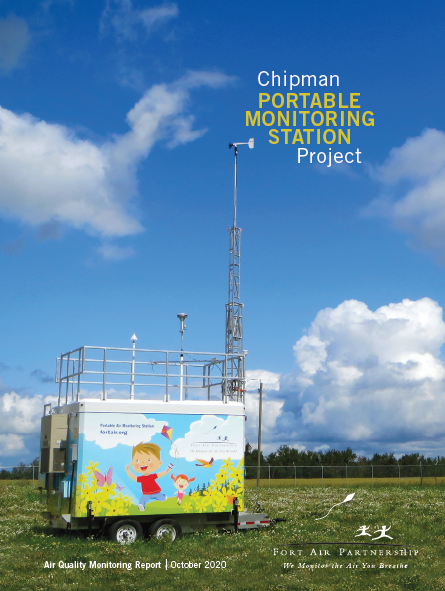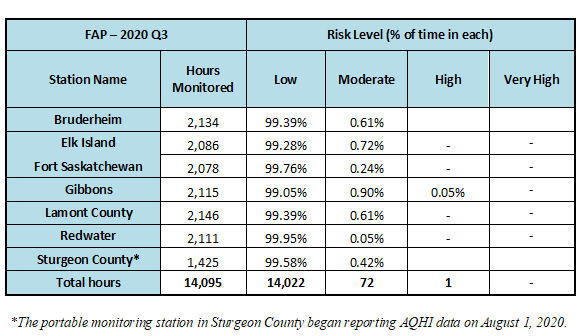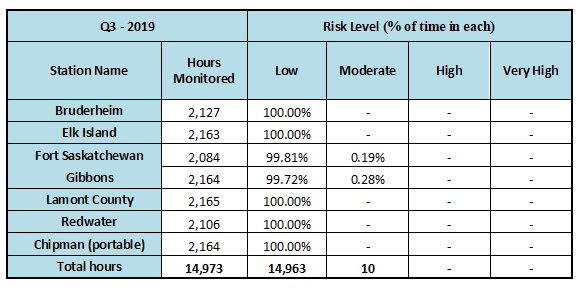 Data collected during a year-long air monitoring project indicates air quality is of low risk to health 98.6% of the time for Chipman and area residents. Fort Air Partnership’s (FAP) portable air monitoring station operated in the Village of Chipman from June 1, 2019 to May 31, 2020.
Data collected during a year-long air monitoring project indicates air quality is of low risk to health 98.6% of the time for Chipman and area residents. Fort Air Partnership’s (FAP) portable air monitoring station operated in the Village of Chipman from June 1, 2019 to May 31, 2020.
The 98.6% Chipman low risk to health Air Quality Health Index (AQHI) rating was a slightly better percentage than the four FAP community stations used for comparison in the report. Less than two per cent of the time the AQHI at Chipman was in the moderate risk category. There were no high or very high-risk hours recorded.
Since the AQHI is a measurement of air quality as it pertains to human health, five substances that represent a standard suite of parameters for a community AQHI station were monitored. Chipman had the lowest monthly Particulate Matter (PM2.5) averages in the FAP Airshed for the majority of the project term. Nitrogen Dioxide (NO2) levels at Chipman were generally lower than levels recorded at other communities within FAP during the wintertime but were otherwise very similar to other stations.
For Ozone (O3), Chipman did not differ substantially from levels recorded at other communities within the Airshed, with all monthly averages being within three parts per billion (ppb) of those recorded at Chipman. Similarly, Sulphur Dioxide (SO2) levels at Chipman did not differ substantially from levels recorded at other communities within the Airshed, with all monthly averages being within 0.8 ppb of the averages recorded at Chipman. As well, Hydrogen Sulphide (H2S) levels at Chipman did not differ substantially from other FAP communities where H2S is monitored.
Regional events such as wildfires and wintertime temperature inversions affected air quality in Chipman in the same way as with other communities throughout FAP’s Airshed, albeit at a slightly lower level. The PM2.5 exceedances recorded in Chipman on June 1, 2019 and January 25, 2020 both occurred during events that affected the entire region.



